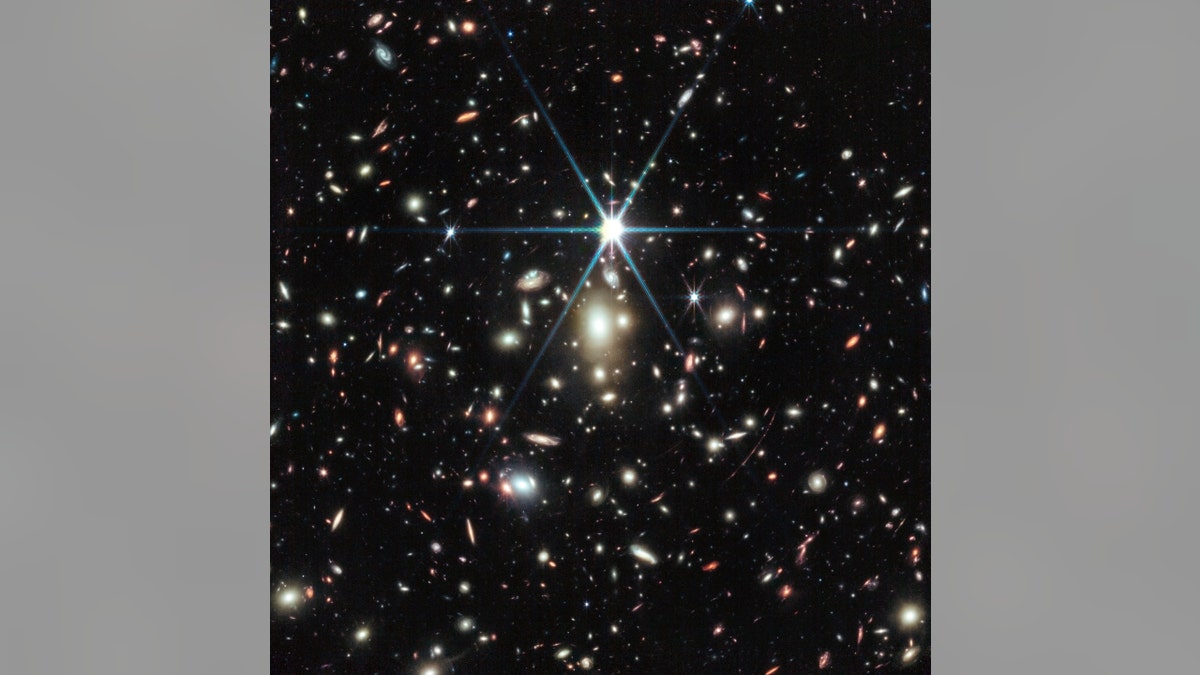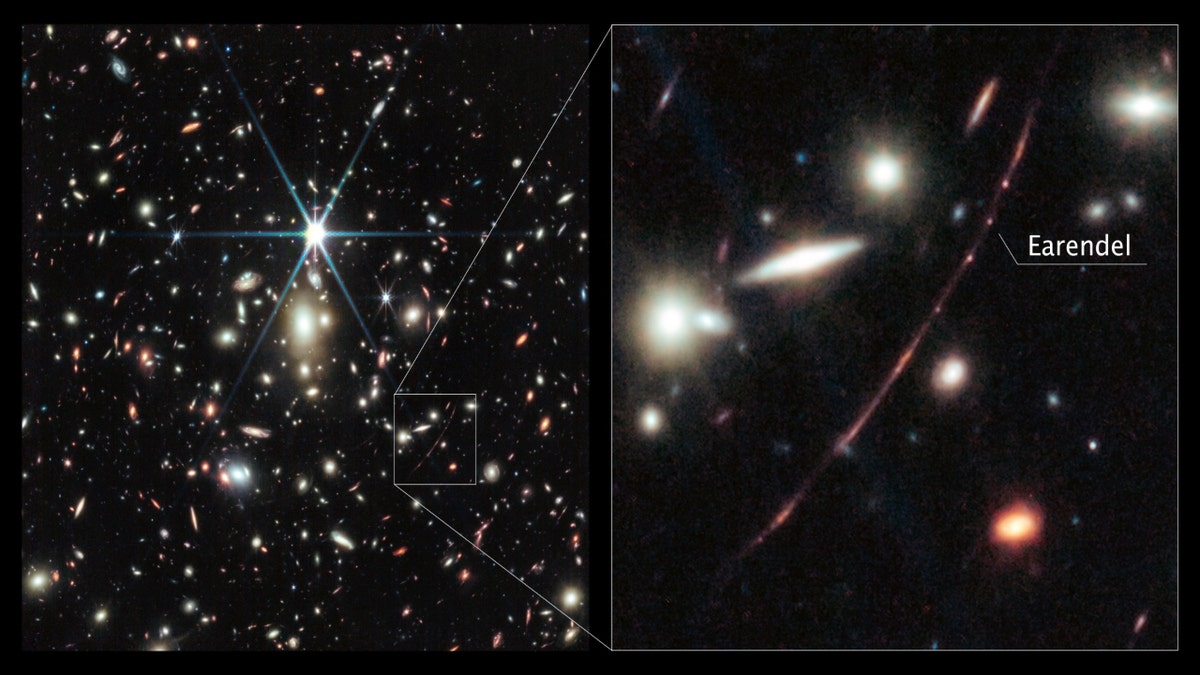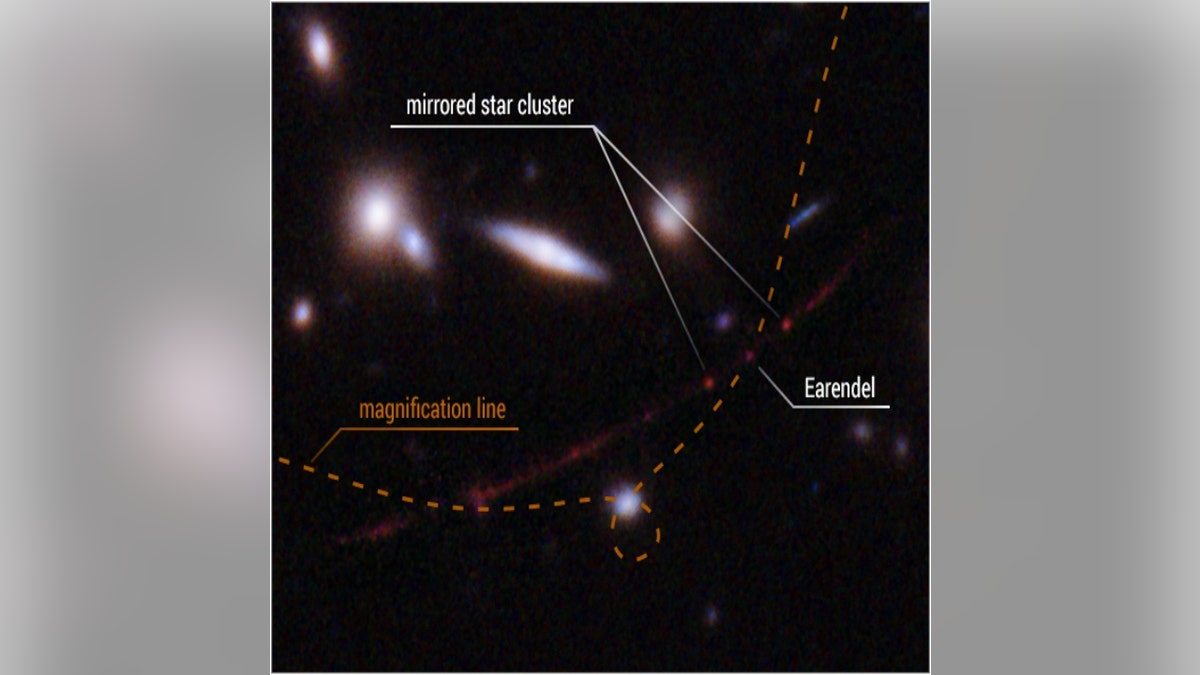The James Webb Space Telescope, operated by NASA, has made groundbreaking observations of Earendel, the most distant star ever detected. The observations reveal that Earendel is a massive B-type star, over twice as hot as our sun and a million times more luminous.
The star was captured by the Near-InfraRed Camera instrument, a part of the Webb telescope, in the very distant universe, a billion years after the big bang. Earendel is located in the Sunrise Arc galaxy, and its name, which means “morning star” in Old English, may be familiar to fans of “The Lord of the Rings” trilogy.
Earendel is detectable due to a combination of advanced technology and gravitational lensing. Gravitational lensing occurs when a massive celestial object, such as the foreground galaxy cluster in this case, distorts the space-time around it.
WEBB SPACE TELESCOPE CAPTURES MYSTERIOUS ‘QUESTION MARK’ IN SHOT OF FORMING STARS

The Sunrise Arc galaxy contains the most strongly magnified galaxy known in the universe’s first billion years: the Sunrise Arc, and within that galaxy, the most distant star ever detected. In this image, the Sunrise Arc appears as a red streak just below the diffraction spike at the 5 o’clock position. (Image: NASA, ESA, CSA, D. Coe (STScI/AURA for ESA; Johns Hopkins University), B. Welch (NASA’s Goddard Space Flight Center; University of Maryland, College Park). Image processing: Z. Levay.)
Thanks to the gravitational lensing effect created by the massive galaxy cluster WHL0137-08, which is located between Earth and Earendel, scientists using the Webb and Hubble Space Telescopes were able to detect the star. The galaxy cluster warps the fabric of space, creating a magnifying effect that enables astronomers to observe objects behind it.
While Earendel appears as a single point of light, other features in the galaxy appear multiple times due to this magnifying effect. Scientists have determined that Earendel is magnified by a factor of at least 4,000 and is extremely small.
WEBB SPACE TELESCOPE CAPTURES STUNNING SHOTS OF RING NEBULA

The star Earendel, nicknamed, is a massive B-type star more than twice as hot as our sun, and about a million times more luminous, as revealed by Webb’s NIRCam (Near-Infrared Camera). (Image: NASA, ESA, CSA, D. Coe (STScI/AURA for ESA; Johns Hopkins University), B. Welch (NASA’s Goddard Space Flight Center; University of Maryland, College Park). Image processing: Z. Levay.)
Based on the color of Earendel, astronomers believe they may have detected indications of a cooler, redder companion star. However, the light from the star has been stretched to longer wavelengths that are beyond the detection capabilities of the Hubble Space Telescope.
Although stars as massive as Earendel often have companions, researchers did not anticipate Webb’s ability to detect any such companions due to the high proximity and indistinguishability of the stars in the sky.

This detailed view highlights the star Earendel’s position along a ripple in space-time (dotted line) that magnifies it and makes it detectable over such a great distance. The distortion and magnification are created by the mass of a huge galaxy cluster located between Hubble and Earendel. Looking through this space is akin to using a magnifying glass, warping and magnifying appearances on the other side. (Science: NASA, ESA, Brian Welch (JHU), Dan Coe (STScI); Image processing: NASA, ESA, Alyssa Pagan (STScI))
CLICK HERE TO GET THE FOX NEWS APP
Webb’s Near-Infrared Spectrograph instrument is currently analyzing the data collected from observations of the Sunrise Arc galaxy and Earendel, which will provide precise measurements of the galaxy’s composition and distance.











:max_bytes(150000):strip_icc()/GettyImages-2201364418-9e24dea6f9f74da2b6603b101fb5ff10.jpg)

